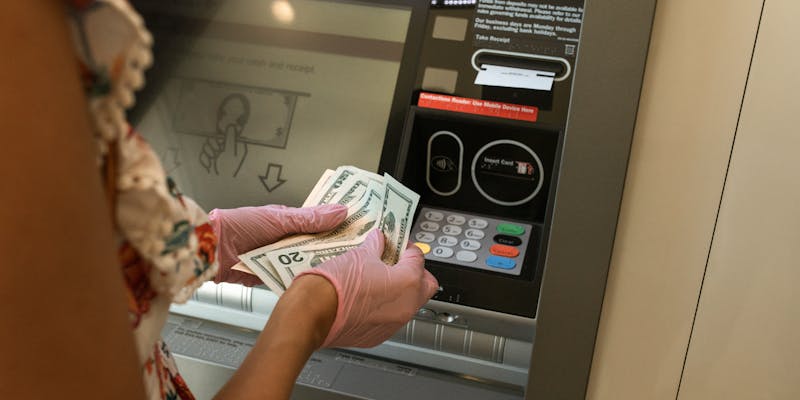Advertisement
Transferring money between banks is a routine task for many people, whether it's sending money to a family member or moving funds between personal accounts. In 2024, technology has made this process smoother, offering multiple ways to transfer money from one bank to another.

Understanding these methods can help you pick the most convenient, secure, and affordable option for your needs. This article will walk you through four easy ways to transfer money, explaining the steps, costs, and timeframes involved. By the end, you'll know exactly which method suits your situation.
Bank-to-bank transfers are one of the most straightforward ways to move money from one account to another. If both accounts are at the same bank, this process is usually free and quick. However, even when dealing with different banks, it remains a reliable method. To initiate a transfer, you typically need the recipient's bank account number and routing number. Most banks allow these transfers to be set up through their online or mobile banking platforms. Once initiated, the transfer can take anywhere from one to three business days, depending on the banks involved.

In some cases, you can even schedule these transfers regularly, such as setting up automatic payments between your checking and savings accounts. The convenience of this method lies in its simplicityno third-party services are involved, and everything happens directly between the two banks.
However, one of the drawbacks is the potential for fees. While many banks don't charge for internal transfers, there could be fees associated with moving money between different financial institutions. It's essential to check with both banks to ensure you're not hit with unexpected costs.
If speed is your top priority, wire transfers are the way to go. This method is often used for transferring large sums of money or when time is of the essence, such as during property purchases. Wire transfers are processed in real-time, meaning the money will usually be available in the recipient's account the same day or the next.
To initiate a wire transfer, you'll need more detailed information than for other transfer methods, such as the recipient's full name, account number, bank name, and SWIFT or routing code. You'll also need to initiate the transfer during the bank's working hours, as wire transfers don't process on weekends or holidays.
One of the main advantages of wire transfers is their security and speed. However, the downside is the costwire transfers can be expensive, often ranging from $15 to $50, depending on the banks involved and whether the transfer is domestic or international. For international transfers, you might also encounter currency conversion fees, which can add to the overall cost.
Electronic Funds Transfer (EFT) is another popular way to transfer money between banks. EFTs include a wide variety of transfers, such as ACH (Automated Clearing House) transfers, which are commonly used for direct deposits, bill payments, and person-to-person payments. Unlike wire transfers, EFTs tend to be more affordable, with many banks offering these services at little to no cost.
To make an EFT, you simply need to link your accounts at both banks, which can be done online. Once the accounts are linked, you can move money between them as needed. This method is convenient because it doesn't require any third-party services, and many people use it for recurring transfers, such as moving money between checking and savings accounts or paying bills.
The main downside of EFTs is the processing time, which is generally longer than that of wire transfers. EFT transfers usually take one to three business days to complete, though some banks offer expedited processing for an additional fee. However, for most day-to-day transfers, the time delay is minimal and often worth the cost savings.
In 2024, third-party payment apps like PayPal, Venmo, and Zelle have become incredibly popular for transferring money between banks. These services offer a flexible and often free alternative to traditional bank transfers. All you need is an account with the payment app and, in many cases, just the recipient's phone number or email address to complete the transfer.
One of the biggest advantages of using third-party payment apps is their ease of use. These apps are designed with the user in mind, offering simple interfaces that allow you to send money within minutes. Depending on the app, transfers can be instant or take up to a few business days, depending on whether you're transferring to a linked bank account or just sending money within the app's ecosystem.

Most of these services are free for domestic transfers, though some charge fees for instant transfers or international transactions. Additionally, the security of these platforms has greatly improved over the years, with encryption and two-factor authentication being standard features.
That said, using third-party apps does come with some potential risks. For instance, these apps are generally not designed for large transfers, so moving significant amounts of money may be better suited for wire transfers or direct bank-to-bank transfers. Moreover, while they are secure, there's always a slight risk when using third-party services that may not be present in more traditional banking methods.
Whether you're transferring money between personal accounts or sending funds to family members, understanding the available options is essential for a smooth and secure process. Bank-to-bank transfers provide a simple and direct solution, while wire transfers offer speed and security for larger amounts. EFTs present an affordable and convenient method for routine transfers, and third-party payment apps bring added flexibility for smaller amounts.
Each method has its own advantages and limitations, from fees and transfer times to security features and ease of use. By assessing your specific needswhether it's speed, cost, or simplicityyou can confidently choose the right method to transfer money from one bank to another.

By Christin Shatzman/Oct 15, 2024

By Alison Perry/Nov 05, 2024

By Mason Garvey/Jan 03, 2025

By Sid Leonard/Dec 07, 2024

By Pamela Andrew/Oct 10, 2024

By Noa Ensign/Mar 18, 2025

By Sid Leonard/Feb 28, 2025

By Susan Kelly/Oct 09, 2024

By Tessa Rodriguez/Dec 15, 2024

By Georgia Vincent/Feb 28, 2025

By Madison Evans/Nov 05, 2024

By Isabella Moss/Nov 20, 2024